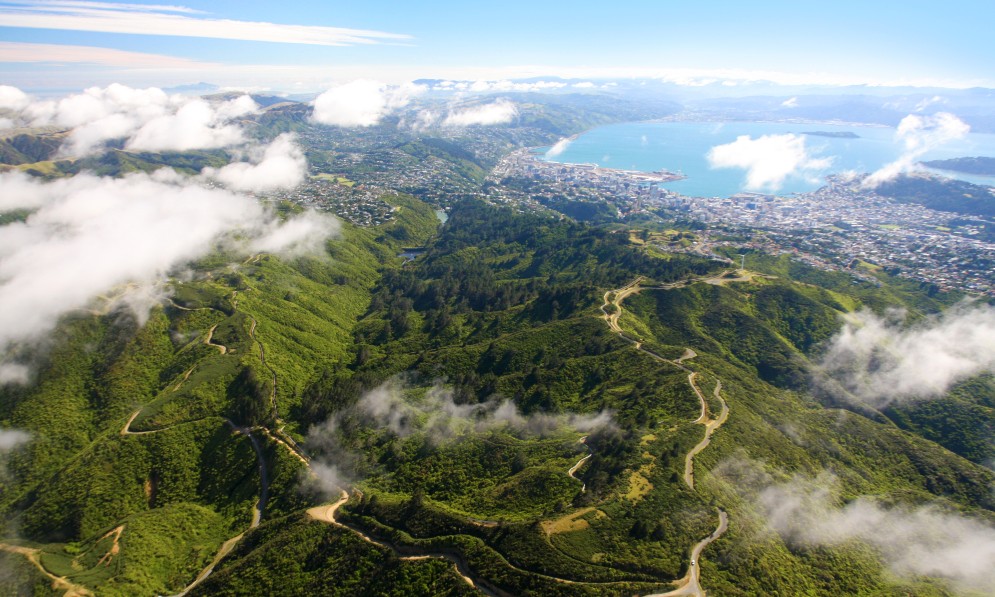Alex Stone looks at the challenges ahead for conservation as we head into 2024 with a new government and an uncertain climate future. Part 3 of 4.
Forest & Bird magazine
A version of this story was first published in the Summer 2023 issue of Forest & Bird magazine.
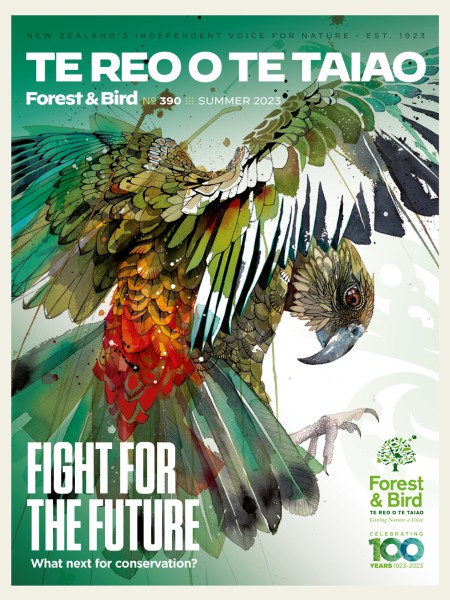
The extraordinary success of the Zealandia sanctuary, located 10 minutes from the heart of Wellington, shows how hope and action can lead the way for conservation success. If we can bring the actions of conservation into our own backyards, we bring the benefits to a much bigger audience. Literally mainstreaming them. What’s not to like?
Dr Danielle Shanahan, chief executive at Zealandia and adjunct professor, Te Herenga Waka Victoria University of Wellington, is able to eloquently distill a big-picture, positive view of conservation into what we can do right outside our front doors.
Insert image
“There is a lot to worry about regarding the fate of biodiversity here in Aotearoa New Zealand and globally. Many species are on the precipice of extinction, and our regulations and approach to
development mean we are still rapidly losing habitats,” she said.
“In the face of that loss, we need stories of hope, and Zealandia Te Māra a Tāne has provided that. Most notably, every suburb in Wellington has experienced an increase in the number of native bird species over the past 20 years.
“Some of the species now spotted in backyards had been gone from our mainland from over 100 years.
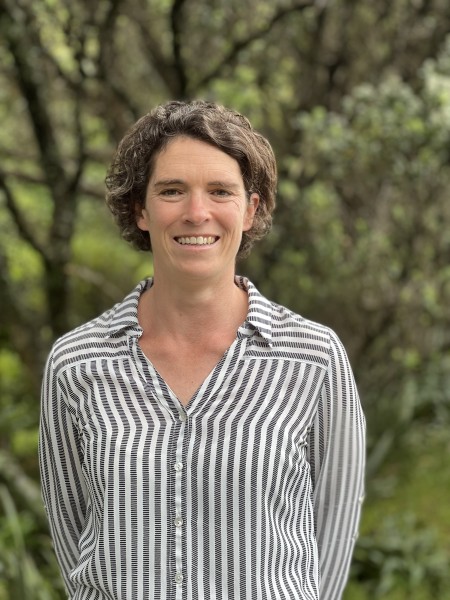
Dr Danielle Shanahan
“What do I think was the key to this incredible turnaround? At its heart was the community. The community established Zealandia, and the community has led the charge on predator-free Wellington to ensure the spaces beyond the fence are safer.”
Looking forward, Danielle says there is no single solution for the biodiversity crisis. It needs collective community action from the bottom up and investment from the top down.
“It can’t just happen in national parks or offshore islands – it must also happen in our towns, cities, and beyond. We must think deeply about how we want our streams and oceans to look in 100 years’ time and not give up on the most difficult problems,” she added.
We’ve seen urban mainland islands can work, and birds, bats, and lizards spill out of these places into local gardens, bringing joy and hope to those lucky enough to encounter them.
And we can certainly fast-track “at-home” conservation efforts as new research and technologies come online and by harnessing mātauranga Māori knowledge too.
SMART TRAPPERS
Charles and Nikki Graves, who live near me in a bush block of around an acre, are full-on devotees of the set-em-and-leave-em Goodnature traps.
In the early days of their pest-eradication efforts on their property, Charles’ conversation was all about how many dead rats he’d find each morning at the base of the tree.
Today, a few years later, they are living in a born-again wildlife paradise, with kākā chicks fledging every year, geckos and ruru on the deck balustrades, and a dawn chorus just like it used to be.
Their experience is being replicated in much larger landscapes too, such as the valleys of Fiordland, where remote trapping and monitoring systems are being tested and refined.
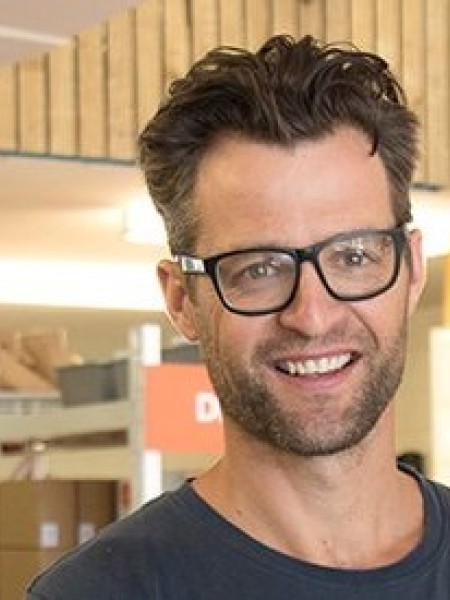
Craig Bond
Interestingly, Goodnature cofounder Craig Bond says people are the most important ingredient when it comes to trapping pests.
“So often, people get caught up in making smart traps and forget the most important ingredient – the trapper. You can build the world’s smartest trap, but if a trapper can’t install it, clear it, or refill it easily, it’s useless.
“Our goal has never been to make smart traps – it’s been to make smart trappers.
“That’s why our traps aren’t just out the bush – they’re also on people’s smartphones, reminding them when they need gas and lure. Then there’s all that kill data, which is like gold dust to trappers because it helps them to make trapping decisions with facts, not assumptions.
“From where I stand, the future of trapping is simple – it’s traps that make their trappers smarter. Because smarter trappers equal more kills, less pests, and more nature.”
The ever-increasing accuracy in GPS locating systems, planning algorithms, and low maintenance, self-resetting traps will help control predators.
It’s good to know we have homegrown Kiwi technology and innovative can-do attitudes on our side. And a whole bunch of smart trappers.
Iwi-led conservation
Over the past three years, the government’s Jobs for Nature funding provided a much-needed funding boost for iwi- and hapū-led conservation initiatives.
In July, Forest & Bird awarded its prestigious Kōtuku award to Te Raukūmara Pae Maunga for its ambitious project to restore the mauri and mana of 150,000ha of native forest in the Raukūmara Range, east of the North Island.
Raukūmara Pae Maunga is a joint project of Te Whānau-ā-Apanui iwi, of the Eastern Bay of Plenty, and Ngāti Porou iwi, of the East Coast, in collaboration with the Department of Conservation.
It is an iwi-led response to the crisis that brought Raukūmara to the brink of ecological collapse, a silent forest that was failed by the Pākehā-centric conservation system.
Ora Barlow-Tukaki, of Te Whānau-ā-Apanui, said: “Our vision is to restore the land for future generations, to return it to how it was in the days of our tīpuna – the mana and mauri of te Raukūmara restored to again thrive, flourish, and nurture all who are connected to it.”
As well as restoring the whenua, the project aims to share skills and knowledge among iwi members while creating local jobs.
We look forward to seeing the Crown partner with iwi and provide long-term funding for win-win initiatives such as this. This will see more Māori-owned land being restored, jobs being created in the regions, and nature returning to abundance as it used to be.
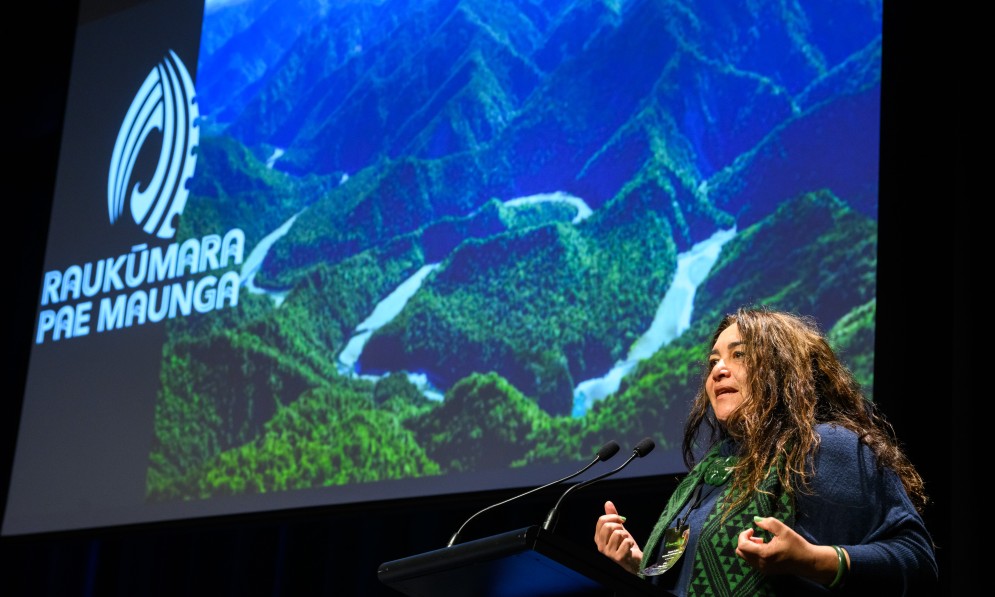
Orla Barlow-Tukaki
Partnerships
Some said Prime Minister John Key was pulling a fast one when he announced in 2016 that New Zealand would become predator free by 2050.
Unlike the Kennedy government’s moonshot, our New Zealand mission was given a woefully inadequate government budget. Instead, said politicians, public–private partnerships would be the way to go.
While more than 5000 groups and iwi have registered to conduct predator control in their communities, supported in their actions by the Predator Free New Zealand Trust, the financial contribution of private interests has fallen way short of what is actually required.
We are going to need partnerships in the future to supplement government funding. But let us enter into them carefully.
There’s also the danger of the “corporatisation of conservation”, with a growing trend for big brands to link themselves to single-species conservation, while non-sexy species or ecosystems lose out.
Looking ahead, there’s a world of potential sponsorship funding out there but a few pitfalls too.

